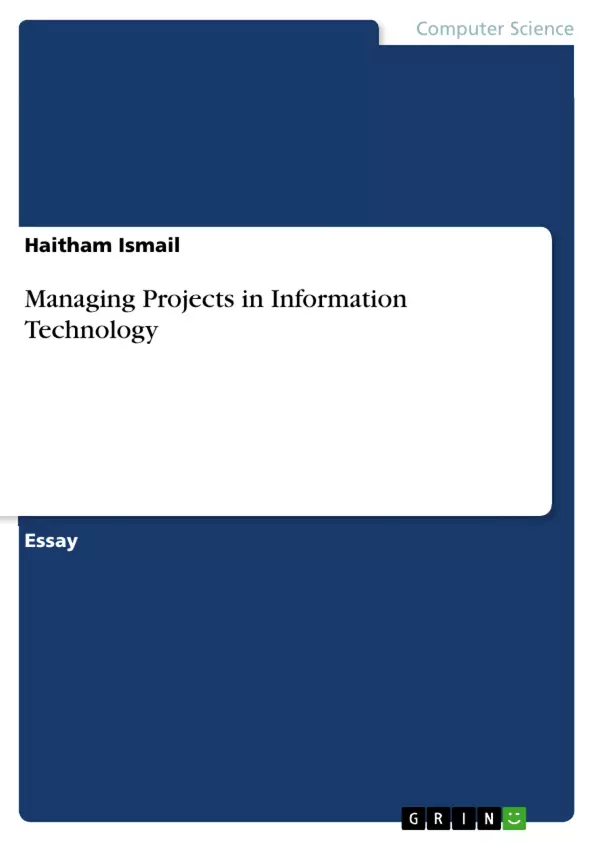Information technology project management is different from normal project management due to the possible complexity it could be. It could vary from designing the infrastructure of a new building to developing a simple application. Its complexity comes from the fact that many teams can be involved (e.g. network team, software team, technical support, vendors, finance, etc.). In addition, the dynamic nature of the IT projects requires the project manager to be more agile to challenges that might come. In this article, we will have a situation from real life on how IT project manager will organize his project in all its stages, from project initiation to project close. It will show samples of reports that should be generated periodically to track the project execution.
Inhaltsverzeichnis (Table of Contents)
- Project Selection & Introduction
- Skills, Roles and structure
- Consultancy
- Project Management
- Final Thoughts
Zielsetzung und Themenschwerpunkte (Objectives and Key Themes)
The primary objective of this work is to provide a comprehensive overview of the management of an information technology project, specifically focusing on the modernization of security infrastructure for a healthcare insurance company. The project aims to address cyber security risks, enhance security controls, and ensure compliance with regulations.
- Project selection and feasibility assessment
- Cyber security risks and mitigation strategies
- Organizational structure and team roles
- Project management methodologies and tools
- Importance of cost-benefit analysis and risk assessment
Zusammenfassung der Kapitel (Chapter Summaries)
- Project Selection & Introduction: This chapter introduces the project context, outlining the goals, objectives, and key stakeholders involved. It emphasizes the importance of aligning the project with organizational strategy and regulatory compliance. The chapter also discusses the project's feasibility, considering cost-benefit analysis, risk assessment, and the allocation of resources.
- Skills, Roles and structure: This chapter explores the organizational structure of the healthcare insurance company and its implications for project management. It highlights the functional structure's advantages, such as specialization and standardization, and examines the specific roles and responsibilities of the project team, including the IT Security Manager and the team of engineers.
Schlüsselwörter (Keywords)
The key terms and concepts explored in this text include: information technology project management, cyber security, risk assessment, cost-benefit analysis, functional organization structure, project team roles, security controls, regulatory compliance, healthcare insurance, data center infrastructure, network security, and system security.
- Quote paper
- Haitham Ismail (Author), 2017, Managing Projects in Information Technology, Munich, GRIN Verlag, https://www.hausarbeiten.de/document/461805


